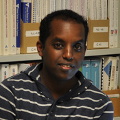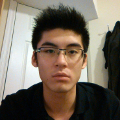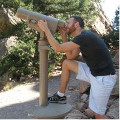Research Summary
Spatial awareness of the devices in ubiquitous computing environments allows for more natural interactions for users (e.g. flicking content to a wall display). Current real-world deployments, however, do suffer from feasibility issues. Most of my research revolves around spatial-awareness in ubiquitous environments. My earliest work in this domain involved working on a framework for building multi-surface applications, in which I implemented an algorithm for combining input from multiple Microsoft Kinect sensors to track wider spaces and overcome occlusion problems. This framework is now being used to explore multi-surface environments in a number of industrial domains.
Later on, I worked on a research project that evaluated a device-based tracking approach in comparison to existing room-instrumentation approaches. My latest work revolves around creating a unified model for mapping gestures and tracking sensors in multi-surface environments.
I am most interested in exploring novel technologies and approaches, and enhancing existing implementations for achieving spatial-awareness and accurate tracking in multi-surface environments.
Interests
- Spatially-aware Ubiquitous Ecologies
- Design of Multi-Surface Environments
- Indoor Inertial Tracking
- Gesture-based Interfaces
- Supporting Collaboration in MSEs
Agile Surface Engineering Group
Innovative Software Engineering!
The Agile Surface Engineering (ASE) group at the University of Calgary is headed by Dr. Frank Maurer and conducts industry-oriented research on application engineering for digital surfaces, agile methods, API design and SE for cloud-based applications.
By working with industrial partners, we are developing advanced prototypes of software applications. These serve as case studies into more fundamental software engineering questions like "What is good software design?" or "How can we build complex systems simply?".



